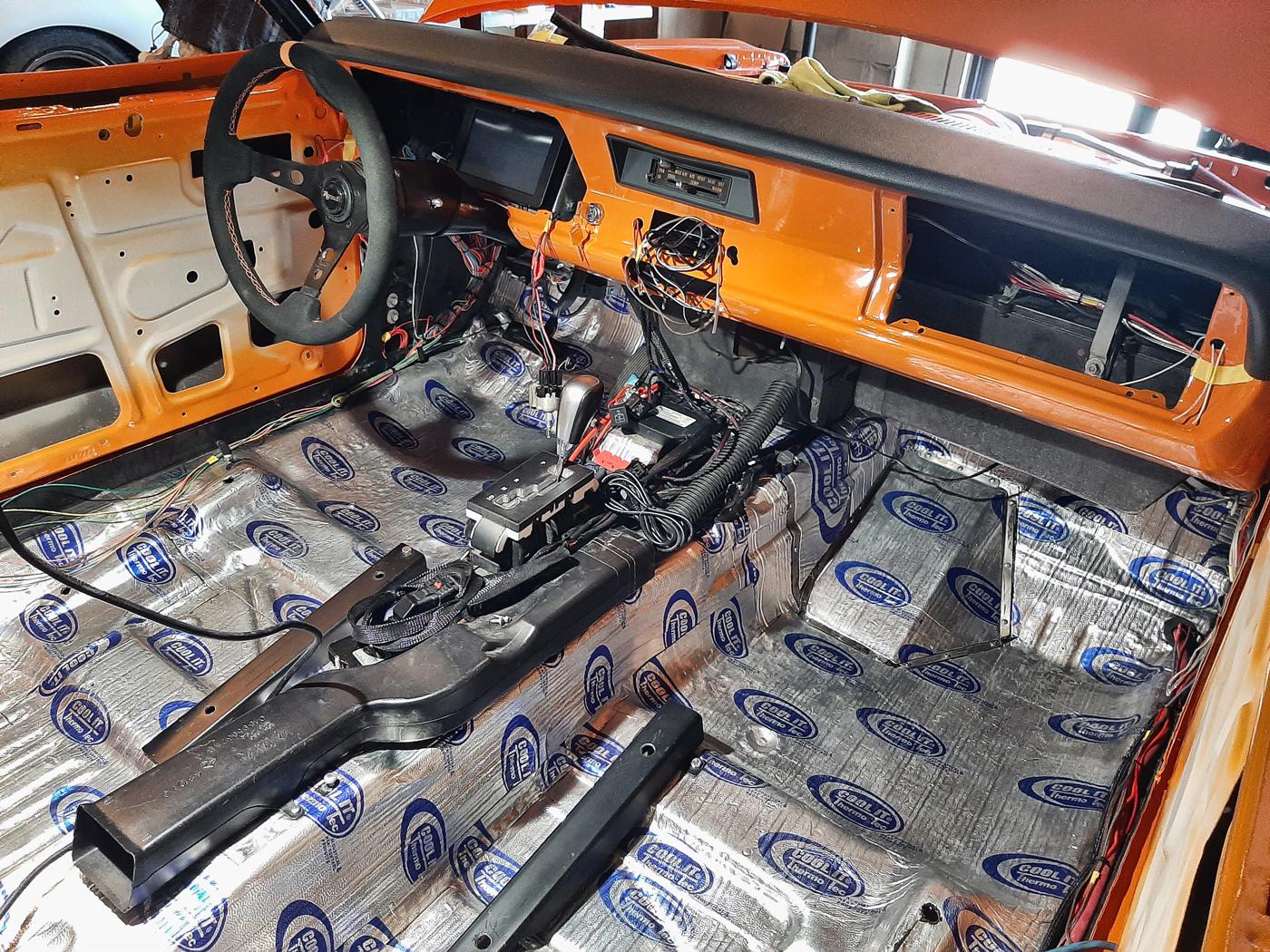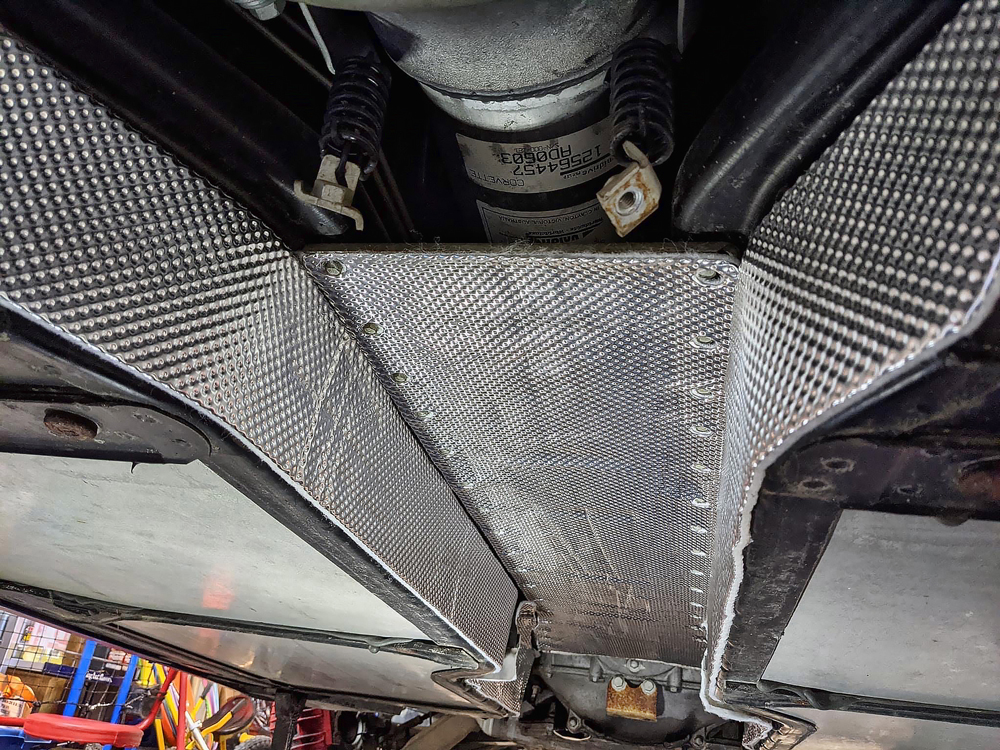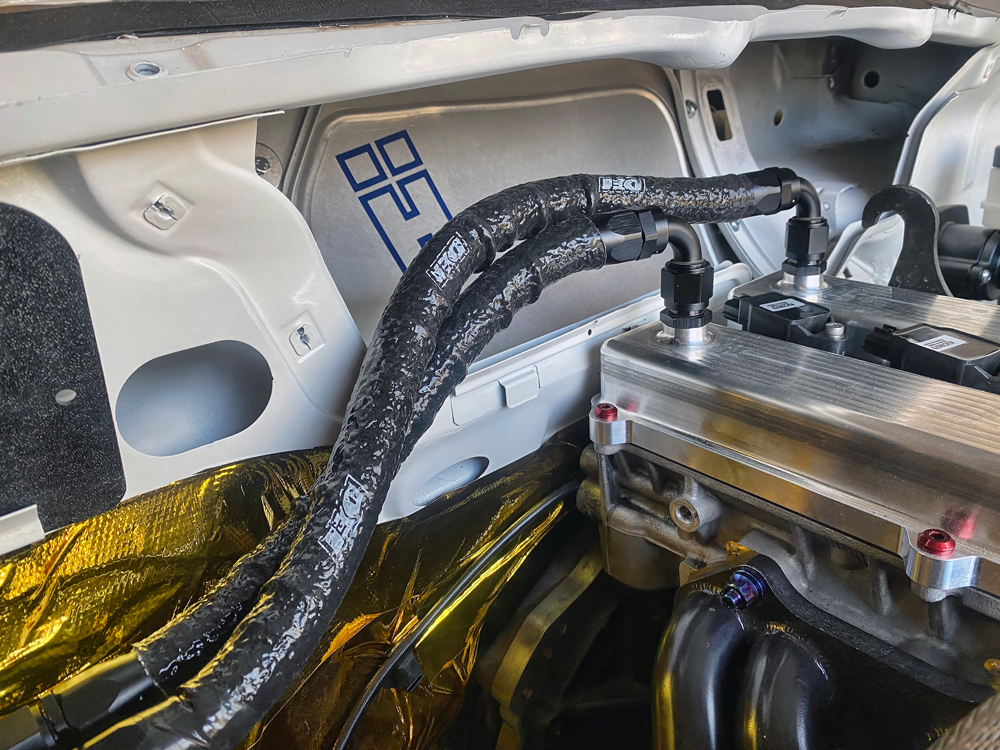Stop Doing That…Do This Instead: Using The Wrong Insulation

The aluminized face on the outside of Thermo-Tec’s Cool It Suppressor mat “does help reflect heat and prolong the life of the material,” said Jeremy White. “But we normally recommend also applying a heat shield in between that mat and the heat source so that each product can properly do the job it’s designed to do.”
Vehicle layout and use-case can help determine which heat- and sound-dampening materials are chosen and where they’re applied.
Weight is typically considered the mortal enemy of performance, but there are instances where the compromise of a few pounds here and there can actually yield improvements at the track. Heat and sound control by way of specialized insulation and shielding materials are two such exceptions. While they won’t benefit your power-to-weight ratio, these measures can improve a race program in a variety of different ways.
“One of those aspects is driver comfort,” explained Mike Buca of Design Engineering, Avon Lake, Ohio. “Prolonged exposure to heat can worsen fatigue, and that can impact a driver’s ability to concentrate and perform at the top of their game.” Along with the ability to improve situational awareness around the car and effectively use communications systems, controlling and limiting noise can also have a measurable impact on driver comfort as well. “That’s particularly useful in endurance formats.”
Jeremy White of Thermo-Tec in Greenwich, Ohio, pointed out that controlling heat can also have a significant impact on vehicle performance as well as overall reliability. “Excess heat can cause anything from vapor lock to electrical shorts. There are a lot of different problems that can pop up when you overlook heat control.”
Although some materials can address both heat and sound control, the type of product that should be used—and where it should be installed on the car—often comes down to application-specific factors. “There’s some crossover between heat and sound control materials; a lot of the materials that we use for heat management will also reduce some sound transmission,” said Buca. “But on both sides of the equation, there are materials that are better suited to handle one of these specific tasks because of their design. One of the most common misconceptions we see is that people will put a damping material down on the floor of the car and think that it’s both sound and heat insulation, when in reality it’s designed to control a certain type of sound. This material is a butyl rubber, so it’s designed to absorb metal-born vibrations that transmit sound through the floor of the car. We put an aluminum layer on the top of it basically so that the rubber isn’t sticky on both sides, but that really won’t do a lot in terms of heat control.”

Most damping material can also only be subjected to a comparatively limited amount of heat, White noted. “For instance, our Suppressor mat has an aluminized face on the outside of it, so it does help reflect heat and prolong the life of the material. But when somebody applies something like that, we normally recommend also applying a heat shield in between that mat and the heat source so that each product can properly do the job it’s designed to do.”
With that in mind, product choice often comes down to the particulars of a given application. “First you have to look at the car and figure out what you have access to in order to put down material,” said Buca. “We’d use a different type of material inside the car than we would on the outside. A lot of race cars have bare metal interiors, and sometimes racers don’t want to add an interior insulation that might be a half-inch thick, non-woven material. In those cases, putting something underneath the car that reflects the heat away is a better option because it’s much thinner and lighter. That material can deflect the heat created by the engine, transmission, and exhaust system away from the floor pan or firewall, and that way it never makes it into the car.”
The foot box and transmission tunnel tend to be areas of focus when the goal is to prevent heat from being transmitted into the cabin, but racers should take note of how the exhaust is routed through the car. “In a Trans-Am car, they typically run the exhaust up and above the back of the motor,” Buca said. “That sends a lot more heat through the transmission tunnel than you’d typically see in a road racing car. But on NASCAR’s Gen-7 car, the exhaust runs inside the door skin next to the rocker panel, right where the driver’s left leg would be. So, it really depends on how the car is set up.”

The amount of space you have to work with in a given area of the car can also play into which type of product is chosen. “For instance, with a land speed car you don’t have a lot of extra room in the engine bay—everything’s packed in very tightly, and there’s not a lot of air movement,” said White. “In that situation you need a very good shield to keep heat off of components, and that’s where something like our Kevlar mat comes into play. It’s thin and it can withstand higher temperatures than fiberglass products can. That’s especially important when you’re running an engine wide-open for a long amount of time.”
White also said that adding protection to wiring, cables, lines, and hoses is a good idea in any racing application, regardless of the temperature ranges typically seen. “Even temperatures of a hundred degrees can start degrading performance when you start heating up things like the air intake and fuel lines. Cooler air and cooler fuel are going to improve performance, and with something like a drag car—where you run it for a period of time and then it sits with all of that heat trapped in the engine bay—things are going to be warmer than they initially were unless you’re using sleeving that keeps those lines at the same temperature throughout the day.”
Considering the expense of a race car build in the grand scheme, adding heat and sound control is a drop in the bucket. “Aside from a turbo shield, which can cost anywhere from $150 to $500 depending on the size of the turbo, a racer can do a pretty good job of insulating their car for around $400,” Buca said. “You might double that if you’re also doing sound insulation. It’s not a big investment when you consider what you’re getting out of it.”
Sources
Design Engineering
designengineering.com
Thermo-Tec
thermotec.com
 MEMBERSHIP LOGIN
MEMBERSHIP LOGIN JOIN PRI
JOIN PRI


